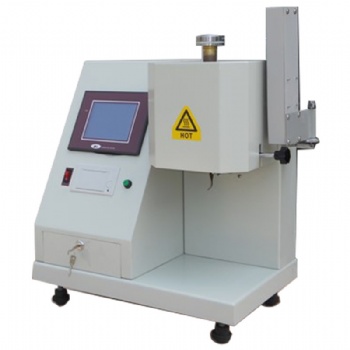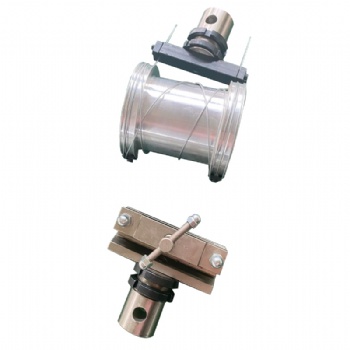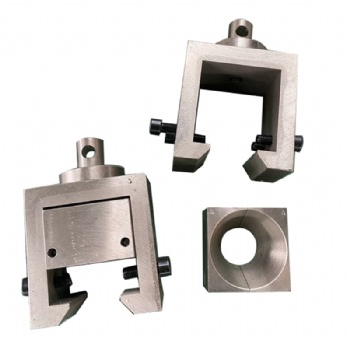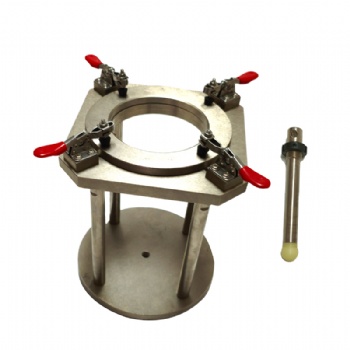ASTM D7031 computerized wood-plastic material universal tester
ASTM D7031 computerized wood-plastic material universal tester
1. Introductions
ASTM D7031 computerized wood-plastic composite products universal testing machine equipped with 3 and 4 point bending test attachment, compression test attachment, nail holding power test attachment, can be used to measure and determine bending force, bending strength, modulus of elasticity in bending, compression strength, shear strength, nail holding power of wood-plastic composite products. The computerized wood-plastic composite products universal testing machine adopts closed loop control system, with wide range of loading speed from 0.01mm/min to 500mm/min and force measuring range from 0.4% to 100% of full capacity. During test, test force, displacement, test time, test curves can be displayed in real time. After test, software auto calculate and save test results. It also allows client to self add test method and test steps.
2. Relative test method for wood-plastic composite products
GB/T 29418 test method of evaluating the properties of wood-based panels and surface decorated wood-based panels
ASTM D7031 standard guide for evaluating mechanical and physical properties of wood-plastic composite products
GB/T 14018 method of testing nail holding power of wood
ISO 9087 wood --- determination of nail and screw holding power under axial load application
GB/T 17657 test methods of evaluating the properties of wood-based panels and surface decorated wood-based panels
ISO 16984 wood-based panels --- determination of tensile strength perpendicular to the plane of the panel
ISO 16978 wood-based panels --- determination of modulus of elasticity in bending and of bending strength
ISO 16981 wood-based panels --- determination of surface soundness
EN 310 wood-based panels --- determination of modulus of elasticity in bending and bending strength
3. Relative manufacturing and calibrating test method for testing machine
GB/T2611 general requirements for testing machines
GB/T16491 electronic universal testing machine
GB/T16825.1 verification of static uniaxial testing machines --- part 1: tension / compression testing machines --- verification and calibration of the force measuring system
ISO7500-1 metallic materials--- verification of static uniaxial testing machine --- part 1: tension / compression testing machines --- verification and calibration of the force measuring system
ASTM E4 standard practice for force verification of testing machines
EN 10002-2 tensile testing of metallic materials --- part 2: verification of the force measuring system of the tensile testing machine
4. Technical specification of testing machine

china astm d7031 computerized wood-plastic material universal tester premium universal testing machine solutions durable UTM with low maintenance affordable UTM with high accuracy custom built universal testing machines price factory supplier manufacturer
How to Select the Right Tensile, Compression, Bending, Shear, Peel, and Tear Testing Machine: Calculation Formulas with Examples
Selecting the appropriate testing machine for tensile, compression, bending, shear, peel, and tear tests requires careful consideration of multiple factors, including the force range, specimen dimensions, test standards, and machine capabilities. Below are the key calculation formulas to help determine the necessary machine specifications, along with examples for better understanding.
1. Tensile Testing Machine Selection
Tensile testing machines measure the maximum tensile strength and elongation of materials.
Key Formula:
Fmax=σmax × A
Where:
Fmax = Maximum required force (N)
σmax = Ultimate tensile strength of the material (MPa)
A = Cross-sectional area of the specimen (mm²)
Example: For a steel specimen with σmax =400MPa and cross-sectional area A =100mm²:
Fmax=400 × 100=40,000N (40kN)
A 50 kN tensile testing machine would be suitable.
2. Compression Testing Machine Selection
Compression tests determine a material's resistance to compressive forces.
Key Formula:
Fmax=σc × A
Where:
Fmax = Maximum required force (N)
σc = Compressive strength of the material (MPa)
A = Cross-sectional area of the specimen (mm²)
Example: For a concrete cube with σc =30MPa and A =1502=22,500mm²:
Fmax=30 × 22,500=675,000N (675kN)
A 1000 kN compression testing machine would be ideal.
3. Bending Testing Machine Selection
Bending tests evaluate the flexural strength of materials.
Key Formula for Three-Point Bending:

Where:
σf = Flexural stress (MPa)
F= Applied force (N)
L= Span length (mm)
b= Width of the specimen (mm)
h= Thickness of the specimen (mm)
Example: For a wooden beam with L=500mm, b=50mm, h=25mm, and requiring a stress of 10 MPa:

A 5 kN bending tester would be suitable.
4. Shear Testing Machine Selection
Shear tests determine the shear strength of materials.
Key Formula:
Fmax=τ × A
Where:
Fmax = Maximum shear force (N)
τ= Shear strength of the material (MPa)
A = Shear area (mm²)
Example: For an aluminum sheet with τ=90 MPa and A=200mm²:
Fmax=90×200=18,000N(18kN)
A 20 kN shear testing machine is recommended.
5. Peel Testing Machine Selection
Peel tests measure the adhesion strength between bonded materials.
Key Formula:

Where:
P= Peel strength (N/mm)
F= Measured force (N)
W= Width of the specimen (mm)
Example: For a tape with F=50N and W=25mm:

A peel testing machine with at least 5 N force capacity is required.
6. Tear Testing Machine Selection
Tear tests determine the resistance of a material to tearing forces.
Key Formula:

Where:
Ftear= Tear strength (N/mm)
F= Measured force (N)
t= Thickness of the specimen (mm)
Example: For a rubber sheet with F=100N and t=2mm:

A tear testing machine with 100 N capacity is needed.
When selecting a testing machine, ensure that the maximum force capacity of the machine is at least 1.2 to 1.5 times the calculated force to account for safety margins and unexpected variations. Additionally, consider compliance with relevant test standards (ASTM, ISO, GB, EN, JIS) and machine features such as speed control, data acquisition, and test automation.
By using the above formulas and examples, engineers and manufacturers can accurately determine the appropriate testing machine specifications for their specific material and application requirements.
Categories
- electronic universal testing machine
- hydraulic universal testing machine
- impact testing machine
- compression testing machine
- horizontal tensile testing machine
- manhole cover testing machine
- pellet compression testing machine
- material testing machine
- steel strand tensile testing machine
- rubber testing equipment
- plastic testing equipment
- load cell
- Böhme abrasion tester
- all testing machine and equipment
- ceramic tiles testing equipment
- asphalt mixture testing equipment
- footwear testing machine
- test fixtures
- torsion tester
- cupping testing machine
Contact Us
- +86-18615632092
- wtbequipment@hotmail.com
- sophie-tester
- +86-18615632092
















 售前客服
售前客服